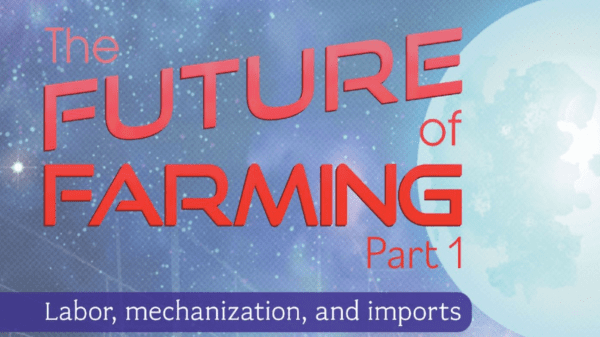Inflation has been at the front of the news for much of this year, and it has affected Americans’ ability to purchase food.
Figures from the International Fresh Produce Association (IFPA) BB #:378962 indicate over 40 percent of households are having some or a lot of difficulty affording needed groceries.
“Fresh produce pound sales trailed behind year ago levels all throughout 2021 and thus far in 2022,” says the IFPA report. “In July, pound sales were down -4.8 percent year-on-year. Importantly, compared with 2019, the prepandemic normal, dollars remained +17.7 percent ahead.”
In short, dollar sales are up; volume sales are down.
Inflation has affected organic produce much as it has its conventional counterpart: organic prices increased by 6.7 percent for the second quarter of 2022 compared with the previous year, coupled with a decline in volume of 2.8 percent, according to a report issued by the Organic Produce Network and Category Partners.
“Seeing a decline in organic volume for Q2 suggests food budgets are under stress in many U.S. households,” notes Tom Barnes, CEO of Category Partners.
But this has to be taken in perspective. At the same time, conventional produce’s average price increased by more than 9 percent compared to the same period last year, with total sales of $18.1 billion, notes the same report. If volume sales were down 4.8 percent for conventional, it would seem that conventional items took a harder hit than organic ones.
The market share across temperature zones (fresh, frozen, and shelf-stable) has remained more or less consistent over the past three years. In 2019, fresh produce accounted for 81 percent of dollar sales in these categories, while the figure was 83 percent for the second quarter of 2022.
How have price increases changed shopper practices? Impulse purchases have fallen; store brands have increased in popularity; and there has been a drop in reliance on foodservice, particularly among those with lower incomes.
One study conducted by the market research firm NPD, households with incomes of less than $75,000 a year are eating 89 percent of their meals at home. They have increased consumption of frozen foods, like pot pies or breakfast sandwiches, and shelf-stable items like canned pasta or ramen.
Consequently, the spending gap between higher and lower incomes has continued to increase.
CONCLUDING THOUGHTS
Economics has often been called “the dismal science,” but for all its equations, it is also a rather imprecise one. Economists still do not understand a great deal about the causes of inflation, and still less about how to manage it (for example, with interest rate increases by central banks).
It is reasonably safe to say that supply chain disruptions initiated by the pandemic and labor shortages in almost all areas of the economy are prime factors, supplemented by further upsets brought about by the Russian invasion of Ukraine. So it is hardly realistic to predict here what inflation may or may not do.
Persistent inflation is not good news for the produce industry, but on the other hand, the industry is reasonably well positioned to deal with it. Higher prices and tighter budgets force consumers to focus on value—and fresh fruits and vegetables definitely provide it.
The industry’s emphasis on maintaining and enhancing value—for example, with new and more appealing varieties—may not make it easy to survive, but will almost certainly make it possible.
This is an excerpt from the cover story in the November/December 2022 issue of Produce Blueprints Magazine. Click here to read the whole issue.



